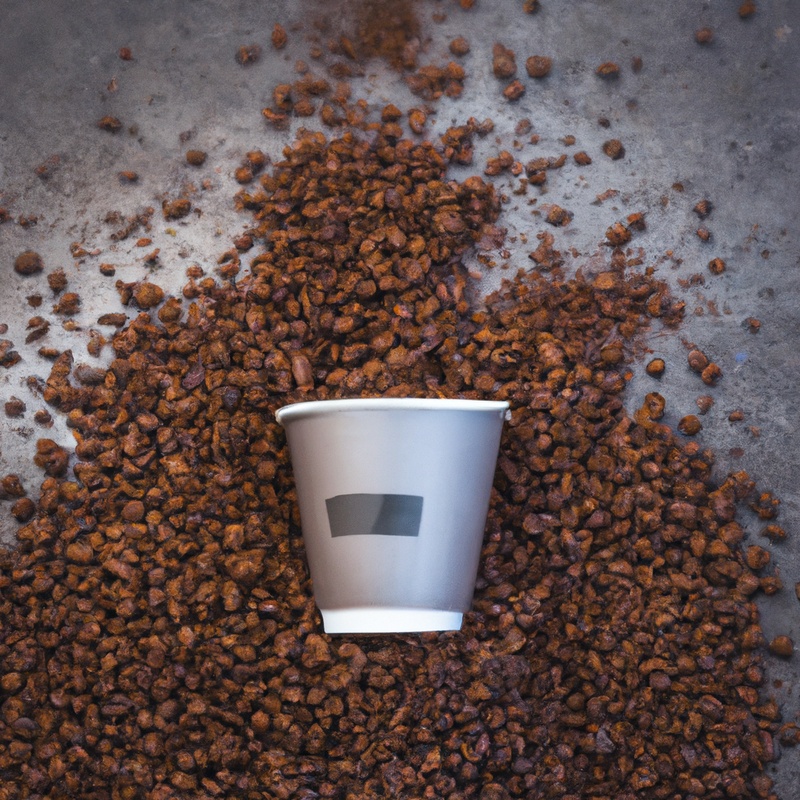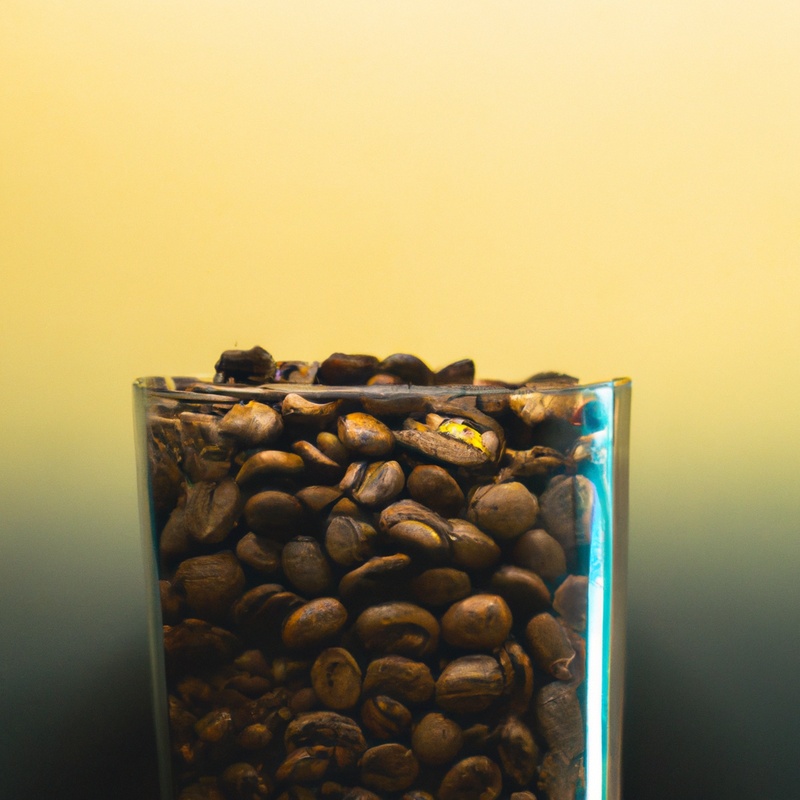Key Takeaways:
- Cold brew coffee generally has higher caffeine content than regular hot brewed coffee.
- The difference in caffeine levels is due to the longer steeping process used in cold brewing.
- Cold brew is typically less acidic than hot brewed coffee, making it easier on the stomach.
- The smooth and mellow taste of cold brew makes it a popular choice among coffee enthusiasts.
Are you a coffee lover searching for your next caffeine fix? Well, look no further than the increasingly popular beverage known as cold brew coffee.
Sure, you may have heard about it, but do you really know what sets it apart from your regular cup of joe?
And more importantly, does it pack a stronger punch when it comes to caffeine content? In this article, we’ll dive deep into the world of cold brew coffee and compare its caffeine levels to those of traditional hot brewed coffee.
Get ready to discover the truth behind the buzz!
| Cold Brew | Regular Coffee | |
| Caffeine Content | Higher | Lower |
| Preparation | Steeped in cold water for 12-24 hours | Brewed with hot water for a few minutes |
| Acidity Level | Lower | Higher |
| Taste | Smooth and mellow | Bold and robust |
Understanding Cold Brew Coffee
Cold brew coffee is a unique brewing method that results in a smooth and less acidic cup of joe.
What is Cold Brew Coffee?
Cold Brew Coffee is a method of brewing coffee that involves steeping coarsely ground coffee beans in cold or room temperature water for an extended period of time, typically 12-24 hours.
This slow extraction process results in a smooth, less acidic coffee concentrate that is meant to be diluted with water or milk before drinking.
Cold brew is known for its rich, mellow flavor and is often served over ice.
Its popularity has been growing in recent years due to its refreshing taste and lower acidity compared to hot brewed coffees.
The Brewing Process
The brewing process of cold brew coffee is quite simple. Firstly, coarse coffee grounds are soaked in cold water for an extended period, usually around 12 to 24 hours.
This allows for a slow extraction of flavors and compounds from the coffee grounds.
Secondly, after the steeping time is complete, the mixture is strained to remove the grounds, resulting in a concentrated coffee liquid. Finally, this concentrate can be diluted with water or milk according to your preference and served over ice.
Flavor Profile of Cold Brew Coffee
Cold Brew coffee has a distinct flavor profile that sets it apart from regular coffee.
It is known for its smooth and less acidic taste, with a subtle sweetness and rich undertones.
The cold brewing process eliminates much of the bitterness and acidity found in hot brewed coffee, resulting in a more mellow and balanced flavor.
Additionally, cold brew tends to have a fuller body and a clean finish.
Its unique flavor profile makes it a refreshing and enjoyable option for coffee lovers.

Caffeine Content in Cold Brew vs. Regular Coffee
Cold brew and regular coffee have differing caffeine contents, with cold brew generally containing more caffeine than regular coffee.
How is Caffeine Extracted?
Caffeine is typically extracted from coffee beans or tea leaves through a process called solvent extraction.
First, the beans or leaves are soaked in a solvent, usually either water or a chemical solvent like methylene chloride.
This allows the caffeine molecules to dissolve into the solvent.
The solvent is then separated from the beans or leaves, and the caffeine is extracted from the solvent through evaporation or other purification methods.
The resulting caffeine powder can then be used in various products like energy drinks, supplements, or medications.

Factors Affecting Caffeine Extraction
Factors such as grind size, brewing time, and water temperature can affect caffeine extraction. Finely ground coffee leads to more surface area for extraction, while coarse grinds extract less caffeine.
Longer brewing times can extract more caffeine, so consider adjusting your brew time based on caffeine preferences.
Hotter water extracts caffeine more quickly than cooler water. Experimenting with these factors can help you achieve your desired caffeine concentration in your brew.
Caffeine Content Comparison
The caffeine content in cold brew coffee is generally higher than that of regular coffee.
Cold brew is made by steeping coffee grounds in cold water for an extended period, usually 12-24 hours.
This longer steeping time allows for a higher caffeine extraction.
On the other hand, regular coffee is brewed using hot water, which tends to extract caffeine faster but at a lower concentration.
However, the exact caffeine content can vary depending on several factors, including the type of coffee beans used and the brewing method.
So, if you’re looking for a stronger caffeine kick, cold brew might be your go-to choice.

Pros and Cons of Cold Brew Coffee
Cold Brew Coffee offers a smooth and less acidic flavor, but it can be time-consuming to make and generally contains more caffeine than regular coffee.
Benefits of Cold Brew Coffee
Benefits of Cold Brew Coffee:
- Smooth and less acidic: Cold brewing reduces the acidity in coffee, resulting in a smoother and less bitter taste.
- Lower in caffeine: Cold brew coffee is typically lower in caffeine compared to hot brewed coffee, making it a great option for those who are sensitive to caffeine.
- Longer shelf life: Cold brew coffee can be stored in the refrigerator for up to two weeks without losing its flavor, making it convenient for busy individuals.
- Versatility: Cold brew coffee can be enjoyed on its own or used as a base for various beverages like iced lattes, frappes, or even cocktails.
- Potential health benefits: Some studies suggest that cold brew coffee may have antioxidant properties and may help reduce the risk of certain chronic diseases.
So, if you’re looking for a refreshing and less acidic alternative to traditional hot brewed coffee, cold brew coffee can be a fantastic choice with its smooth taste, lower caffeine content, and versatility.
Enjoy it chilled and experiment with different flavors to find your perfect cup of cold brew coffee!
Drawbacks of Cold Brew Coffee
Cold Brew Coffee has its fair share of drawbacks.
- It requires time and patience to prepare as the coffee grounds need to steep in cold water for an extended period.
- The resulting brew can sometimes be too strong or too weak, as it is difficult to control the strength of the coffee.
- Cold brew also tends to be more expensive than regular coffee due to the longer steeping process and the higher coffee-to-water ratio.
- It lacks the distinctive acidic and bright flavors that you might find in hot brewed coffee.
- Lastly, while cold brew has a lower acidity level, it can still cause stomach discomfort for some individuals.
Frequently Asked Questions
Is Cold Brew Stronger than Regular Coffee?
Cold brew is typically stronger than regular coffee.
The brewing process involves steeping coffee grounds in cold water for an extended period, often 12 to 24 hours.
This slow extraction method produces a concentrated coffee concentrate that is more potent in flavor and caffeine content.
When diluted with water or milk, the strong coffee concentrate can be customized to suit your taste preferences.
So, if you’re looking for a stronger coffee experience, cold brew might be the way to go.
Does Cold Brew Have More Caffeine?
Does cold brew have more caffeine than regular coffee? Yes, cold brew generally has more caffeine than regular coffee.
The brewing process involved in making cold brew extracts caffeine more efficiently, resulting in a higher caffeine content.
However, the caffeine levels can vary depending on factors like the type of beans used and the brewing time. So, if you’re looking for a stronger caffeine kick, cold brew might be a good choice for you.
Is Cold Brew Less Acidic?
Cold brew is indeed less acidic than regular coffee. The cold brewing process involves steeping coffee grounds in cold water for an extended period, usually around 12 to 24 hours.
This slow extraction process eliminates the bitterness and acidity that is typically associated with hot brewed coffee.
As a result, cold brew has a smoother and less acidic taste, making it a popular choice for those with sensitive stomachs or acid reflux.
Tips for Enjoying Cold Brew Coffee
Discover simple tips for enjoying cold brew coffee, including serving suggestions, a DIY recipe, and recommended brands.
Serving Suggestions
Serving Suggestions:
- Add some ice cubes: Cold brew coffee is naturally concentrated, so adding ice cubes can help dilute it and make it more refreshing.
- Mix it with milk or cream: Cold brew coffee has a smooth and bold flavor, which pairs well with milk or cream. Try adding a splash to enhance the taste.
- Sweeten it up: If you prefer your coffee on the sweeter side, add a dash of sugar, honey, or flavored syrup to your cold brew. Stir well to ensure it’s evenly distributed.
- Serve it over ice cream: For a decadent treat, pour your cold brew coffee over a scoop of your favorite ice cream. The resulting affogato-style dessert is both delicious and refreshing.
- Experiment with flavors: Get creative and add a touch of vanilla extract, cinnamon, or even a sprinkle of cocoa powder to your cold brew for an extra flavor boost.
- Garnish with citrus or herbs: Add a twist of lemon, orange, or a sprig of fresh mint to your cold brew for a subtle hint of brightness and aroma.
Remember, serving suggestions are meant to enhance your enjoyment of cold brew coffee, so feel free to experiment and find your perfect combination.
Cheers!
DIY Cold Brew Recipe
DIY Cold Brew Recipe: Making your own cold brew coffee is easier than you might think! Here’s a simple recipe to get you started:
- Coarsely grind your favorite coffee beans. Aim for a consistency similar to coarse sand.
- In a large jar or container, combine 1 cup of coffee grounds with 4 cups of cold, filtered water. Stir gently to ensure all grounds are saturated.
- Cover the jar and let it steep in the refrigerator for 12-24 hours. The longer you steep, the stronger the flavor will be.
- After steeping, strain the mixture through a fine-mesh sieve or coffee filter to remove the grounds.
- Dilute the concentrate to your desired strength using cold water or milk. This step is optional but recommended.
- Serve over ice and enjoy your homemade cold brew coffee!
Feel free to experiment with different bean varieties and steeping times to find your perfect brew. And don’t forget to add your favorite flavorings and sweeteners if desired!
Recommended Cold Brew Brands
Looking for some great cold brew brands to try? Here are a few recommendations:
- Stumptown Coffee Roasters: Known for their smooth and flavorful cold brew, Stumptown offers a variety of blends to suit different preferences.
- Blue Bottle Coffee: With a dedication to quality and sustainable sourcing, Blue Bottle’s cold brew is rich and satisfying.
- Grady’s Cold Brew: If you prefer a concentrate that you can easily dilute to your desired strength, Grady’s offers a convenient and delicious option.
- Chameleon Cold Brew: With organic, fair-trade beans, Chameleon’s cold brew is bold and full-bodied.
- La Colombe: Known for their pure black cold brew, La Colombe delivers a rich and refreshing flavor.
- High Brew Coffee: If you’re on the go, High Brew’s ready-to-drink cold brew cans are perfect for a quick caffeine fix.
Remember to always check the label for the caffeine content and brew strength that suits your taste preferences. Enjoy exploring these recommended cold brew brands!
Final Verdict
Cold brew coffee offers a unique and flavorful alternative to regular coffee. While it is true that the brewing process of cold brew extracts less caffeine, the concentrated nature of the extraction can make it appear stronger.
However, it is important to note that the actual caffeine content in cold brew coffee is generally lower than in regular coffee.
Additionally, cold brew has the advantage of being less acidic, which makes it easier on the stomach. Ultimately, the choice between cold brew and regular coffee comes down to personal preference.
For those looking to reduce their caffeine intake or enjoy a smoother and less acidic cup of coffee, cold brew is a fantastic option to explore.
